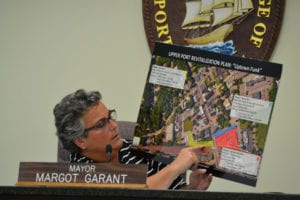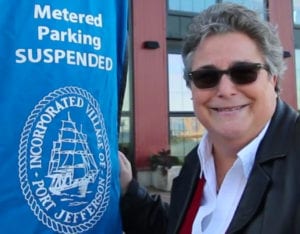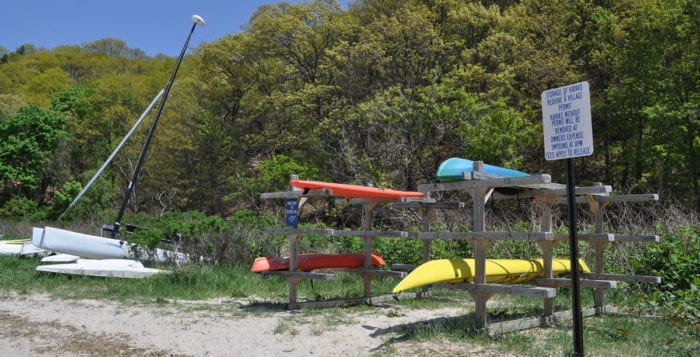By Alex Petroski
Construction of a third set of apartments is slated to begin in the spring in Port Jefferson Village after demolition of the vacant Islander Boat Center building on West Broadway began last week. This comes after ground was broken in June 2016 on a 112-unit apartment complex by TRITEC Real Estate Company adjacent to the Islander Boat Center property called The Shipyard luxury apartments, as well as the opening of the 38-unit complex by Rail Realty called The Hills at Port Jefferson in upper Port, which will grow by 36 units upon completion later this year.

Hauppauge-based building company The Northwind Group owns the site of the new project, which will be called Overbay apartments. A Conditional Site Plan and Conditional Use approval were granted for the property by the village building and planning department in May 2015 for the construction of 52 apartment units, according to Special Village Attorney for the department Alison LaPointe, and Northwind managing member Jim Tsunis confirmed in a phone interview that is still the plan. LaPointe said in an email several other conditions laid out by the department need to be met by the property owner prior to the issuance of a Final Site Plan and a building permit. Tsunis declined to give a reason why demolition began nearly two years after receiving board approval.
Demolition of the original structure began Feb. 10 but was not complete as of the morning of Feb. 13. The new building will overlook Port Jefferson Harbor.
“It’s a cute little nautical style building — I’m looking forward to building it,” Tsunis said. He added he’s excited to be a part of the expansion and beautification process going on in the village.
“Hopefully within the week that building will be down, which is good news,” village Mayor Margot Garant said during a board meeting Feb. 8 after the demolition permit was issued.
Another board member shared his positive outlook on the future of the site.
“It’ll improve the western entrance to the downtown area,” Trustee Bruce D’Abramo said during the meeting.
At least one trustee is concerned about the impact all of the changes in the village will have for long-time residents.
“This is a Victorian village but we’re turning it into hodgepodge lodge here,” Bruce Miller said. “There’s just no cohesion here.”
Garant added the village board has no jurisdiction over the building and planning department, and the new apartment buildings all meet standards set in the village code. According to the village code, structures are not permitted to exceed 35-feet at their highest point.

A member of the community who lives on Beach Street shared similar concerns to Miller, and voiced her displeasure during the public comment period of the meeting.
“I’m sick to my stomach when I look at it,” the resident said of The Shipyard building, which is under construction, adding she’s not looking forward to another building going up next to it. “I’m sick to my stomach when I drive down the hill. I feel bad for every other resident in the area who’s going to be looking at this massive structure.”
Barbara Sabatino, a village resident and business owner, as well as a member of the building and planning department, was at the meeting and expressed regret over approving the building of the large structure.
“We had a lot of discussion about this at planning board, we’re restricted to what they can build by code,” she said. “If the code says you can build ‘x’ amount of floors with ‘x’ amount of square footage, we’re kind of stuck. We can’t say ‘no you can’t build something,’ if legally in the code they can. What we can do is learn from this is that this looks a lot bigger than we had anticipated.”





















